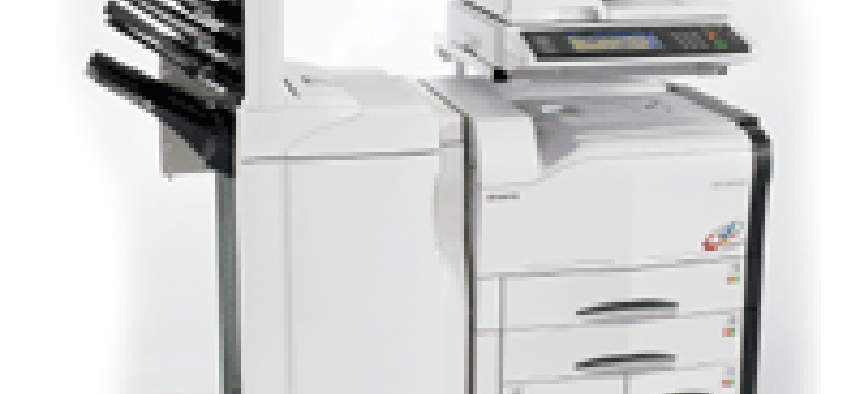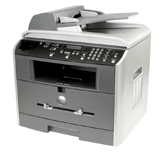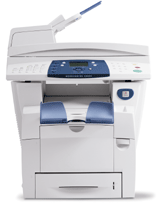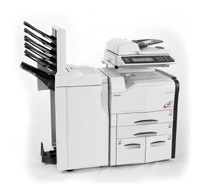Savings is latest feature of multifunction printers

Consolidation is an architecture strategy popular with government IT shops.
Consolidation is an architecture strategy popular with government IT shops. But today, consolidation is more common with data centers than with office centers. For many agencies, consolidation could easily apply to the fleet of copiers, printers, scanners and fax machines they maintain.All-in-one multifunction printers ? or multifunction products, depending on you ask ? have been around for a while, but they've grown up significantly in recent years. What began as a home-office printer with built-in copying, scanning and faxing capabilities has grown into an advanced network system that's like having a Kinko's down the hall. Best of all, these multifunction machines ? some are printers at their core, others started out as copiers ? stand to save you money.The average large enterprise spends millions of dollars per year printing, copying, faxing, scanning and distributing information. Typically, in offices that use separate devices, the cost of human intervention to retrieve documents, clear paper jams, install new cartridges and the like can be a fiscal drain. Environmental costs, such as real estate, utilities and storage facilities add to the total bill.Factor in document delivery and assembly costs for collation, folding, stapling and binding, courier or mailing services and other preparation or delivery costs, and the price per document can be exceedingly high.An August study sponsored by Hewlett-Packard Co. and conducted by research firm IDC of Framingham, Mass., shows a typical workgroup of 50 users costs about $1,722 in monthly hard costs such as paper, toner and ink. Swapping out multiple printers, copiers, scanners and fax machines for five multifunction printers and two digital printers can reduce hard costs to $1,560. Add in productivity savings of $3,465, the study estimates, and the grand total amounts to monthly savings of $3,675 per workgroup.[IMGCAP(2)]According to research group Gartner Inc. of Stamford, Conn., demand for black-and-white network printers is flat, but parts of the market, including multifunction and color-production devices, are heating up.Still, organizations must choose multifunction printers that match their requirements. Low-end, inkjet units are fine for personal or small-office use but won't stand up to the rigors of larger workgroups, in which several users are queued up to produce hundreds or thousands of copies daily.The good news is that shopping for a networked multifunction printer is much the same as shopping for a single-purpose printer. When browsing acquisition schedules for multifunction printers, look for a network-capable, laser-based system with a strong RISC engine and plenty of expandable memory.Consider single-pass technology, speeds of between 20 and 90 pages per minute of printing or copying, a hard drive and a controller that can pass tasks seamlessly between the machine's various functions.Any printer worth the money should come with most of the following features:High-end multifunction printers, such as the HP Color LaserJet 9500 and the Xerox WorkCentre Pro 35, offer similar scanning capabilities, including support for Lightweight Directory Access Protocol. LDAP support lets users access an organization's network addresses by searching and displaying matching names from the multifunction printer.[IMGCAP(3)]In addition to color copying and printing, the Canon imageRunner C2620 uses its scanning feature to distribute data to several locations, including individuals or groups of e-mail and Internet fax addresses, internal mailboxes, network or host files and folders, and document management applications such as Canon imageWare. A scan-to-e-mail feature can help cut costs and inefficiencies associated with mass faxing.The true test of a multifunction printer is how well it switches among print, copy, scan and fax functions. This ability depends largely on the device's controller, which manages the various tasks. If in preliminary tests, a multifunction printer pauses between jobs or functions or causes users to wait, consider buying a different unit.This guide lists more than 30 networked black-and-white and color laser multifunction printers built to service small workgroups and departments across the enterprise. Representative examples of each manufacturer's range of products are listed. Most sell a much larger range of products, including very high-end document management and workflow systems costing more than $20,000. For a complete listing of products, check the vendors' Web sites.J.B. Miles writes from Honomu, Hawaii. E-mail him at .



jbmiles@starband.net

Dell 1600

The Xerox WorkCentre C2424

Kyocera KM-C2630
- Advanced networking
- Exceptional printing
- Network scan, fax and distribution capability.
jbmiles@starband.net
NEXT STORY: Schism downs JRIES homeland security network

